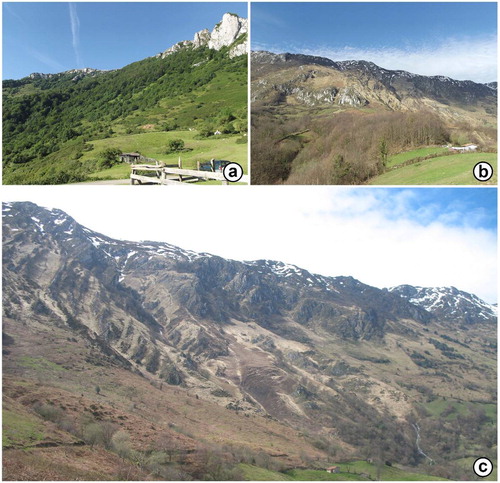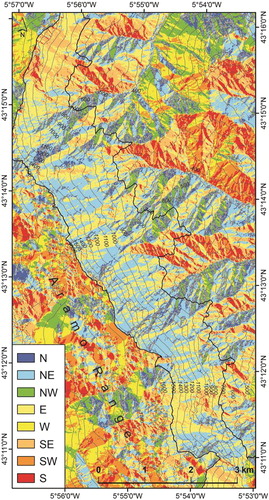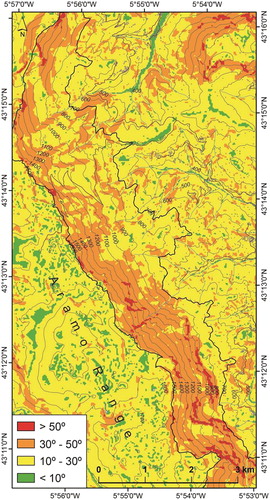Figures & data
Figure 1. Location of the study area. (a) Hypsometric map. (b) Hillshade map on the ortophotography of the east hillside of the Aramo Range.
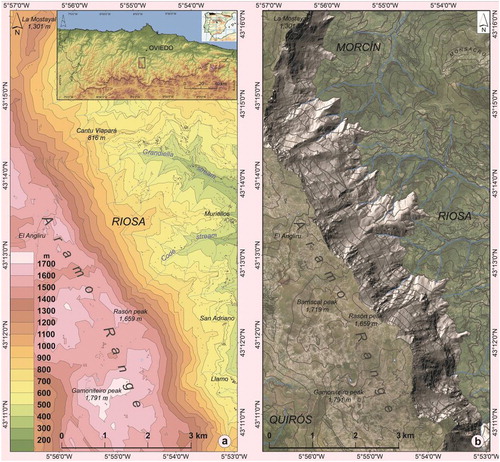
Figure 2. Geological map. (1) Rañeces-La Vid Group: dolomites, limestones, sandstones, shales and marlstones (Lower Devonian). (2) Ermita Formation: quartzite sandstones, microconglomerates and siltstones (Upper Devonian). (3) Cándamo-Baleas and Alba Formation: limestones (Upper Devonian - Carboniferous). (4) Barcaliente Formation: micritic limestones (Namurian Carboniferous). (5) Valdeteja Formation: bioclastic limestones (Namurian Carboniferous). (6) Lena Group: shales, sandstones, marlstones, limestones and coal (Moscovian Carboniferous). (7) Canales Formation: shales, sandstones and limestones (Moscovian Carboniferous). (8) Mieres Formation: quartzite conglomerates, sandstones, shales and coal. (Moscovian Carboniferous). (9) Mass movements. (10) Debris deposit. (11) Fluvial deposits. (12) Overthrusts. (13) Faults.
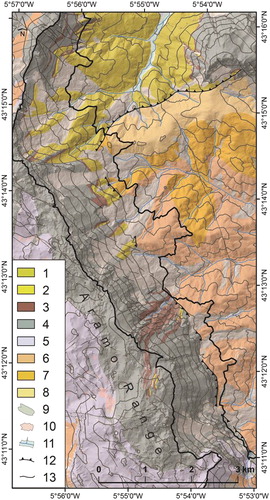
Figure 3. Climate map. (1) Dfsc: cold mountain. (2) Cfsc: fresh climate. (3) Cfsb3: transition to fresh. (4) Cfb2: temperate.
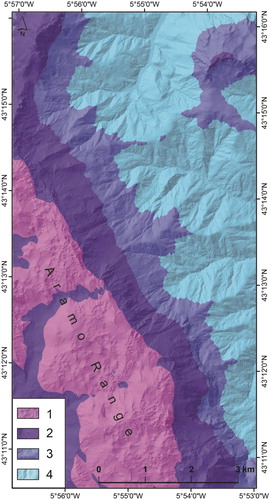
Figure 4. (a) The east hillside of the Aramo on February 10, 2015. (b) Snow avalanches in the central sector of the hillside (Riosa) on 22 February 2016 and (c) in the forests of the north zone (Morcín) on 28 January 2015.
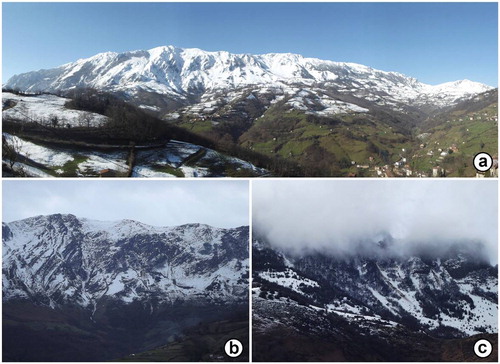
Figure 5. Snow avalanche paths were studied in the field in detail. Avalanche paths (a and b) are geomorphologically active sites. Inside of paths can be appreciated remains of wet snow avalanches.
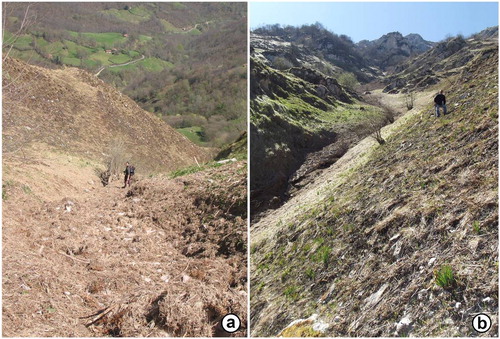
Figure 8. (a) The great fragmentation of the non-arboreous plant formations makes its mapping very difficult. (b) The activity of the snow avalanches also favours this fragmentation, preventing the evolution of the areas of scrubland and forest. (c) In spring, the effects of snow avalanches disturbances are easily distinguished by the brightness of the crushed and burned grass by the snow.
